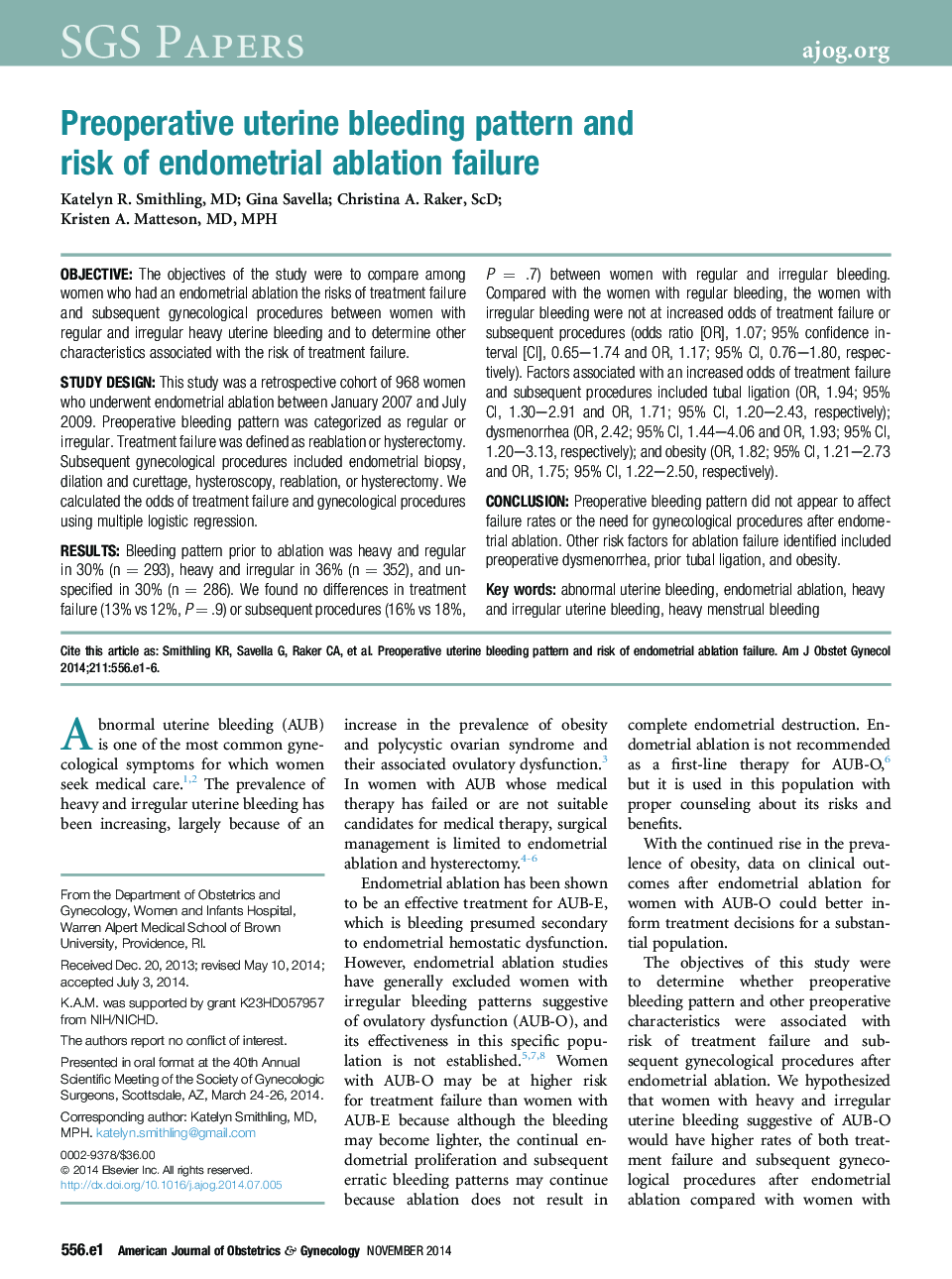| کد مقاله | کد نشریه | سال انتشار | مقاله انگلیسی | نسخه تمام متن |
|---|---|---|---|---|
| 6145558 | 1594913 | 2014 | 6 صفحه PDF | دانلود رایگان |
ObjectiveThe objectives of the study were to compare among women who had an endometrial ablation the risks of treatment failure and subsequent gynecological procedures between women with regular and irregular heavy uterine bleeding and to determine other characteristics associated with the risk of treatment failure.Study DesignThis study was a retrospective cohort of 968 women who underwent endometrial ablation between January 2007 and July 2009. Preoperative bleeding pattern was categorized as regular or irregular. Treatment failure was defined as reablation or hysterectomy. Subsequent gynecological procedures included endometrial biopsy, dilation and curettage, hysteroscopy, reablation, or hysterectomy. We calculated the odds of treatment failure and gynecological procedures using multiple logistic regression.ResultsBleeding pattern prior to ablation was heavy and regular in 30% (n = 293), heavy and irregular in 36% (n = 352), and unspecified in 30% (n = 286). We found no differences in treatment failure (13% vs 12%, P = .9) or subsequent procedures (16% vs 18%, P = .7) between women with regular and irregular bleeding. Compared with the women with regular bleeding, the women with irregular bleeding were not at increased odds of treatment failure or subsequent procedures (odds ratio [OR], 1.07; 95% confidence interval [CI], 0.65-1.74 and OR, 1.17; 95% CI, 0.76-1.80, respectively). Factors associated with an increased odds of treatment failure and subsequent procedures included tubal ligation (OR, 1.94; 95% CI, 1.30-2.91 and OR, 1.71; 95% CI, 1.20-2.43, respectively); dysmenorrhea (OR, 2.42; 95% CI, 1.44-4.06 and OR, 1.93; 95% CI, 1.20-3.13, respectively); and obesity (OR, 1.82; 95% CI, 1.21-2.73 and OR, 1.75; 95% CI, 1.22-2.50, respectively).ConclusionPreoperative bleeding pattern did not appear to affect failure rates or the need for gynecological procedures after endometrial ablation. Other risk factors for ablation failure identified included preoperative dysmenorrhea, prior tubal ligation, and obesity.
Journal: American Journal of Obstetrics and Gynecology - Volume 211, Issue 5, November 2014, Pages 556.e1-556.e6
